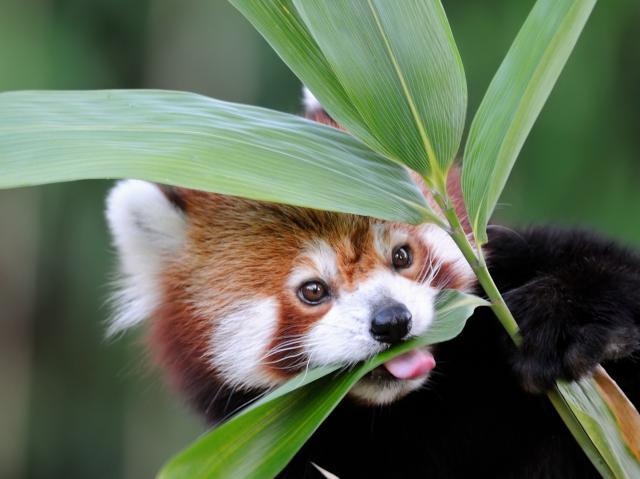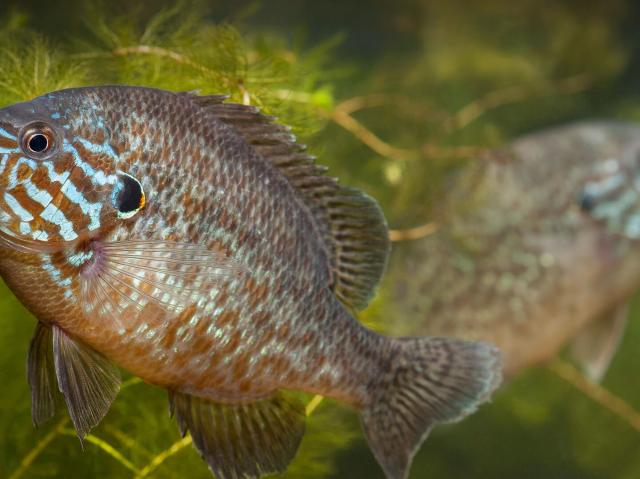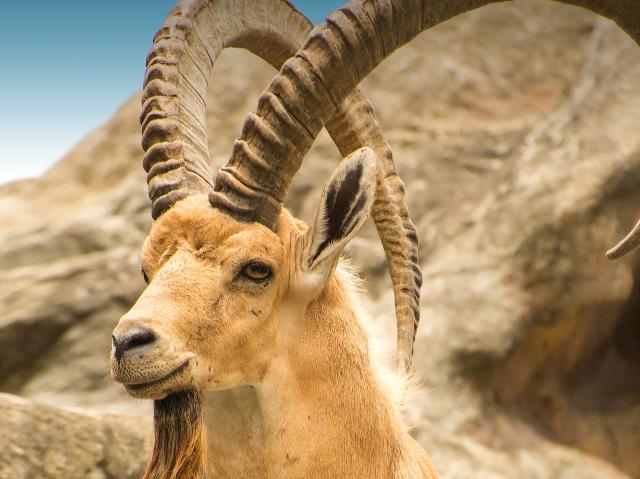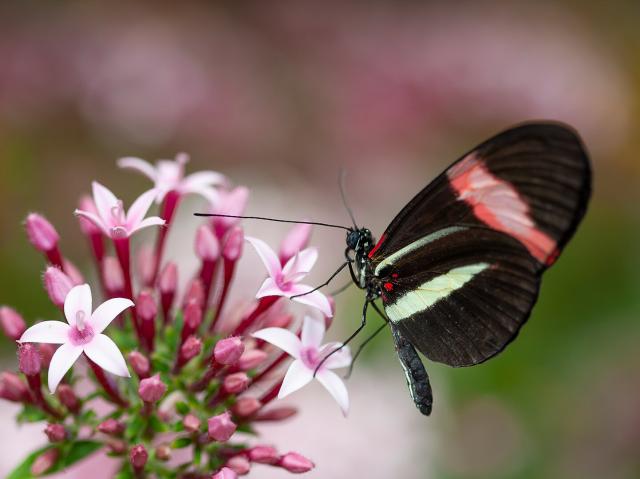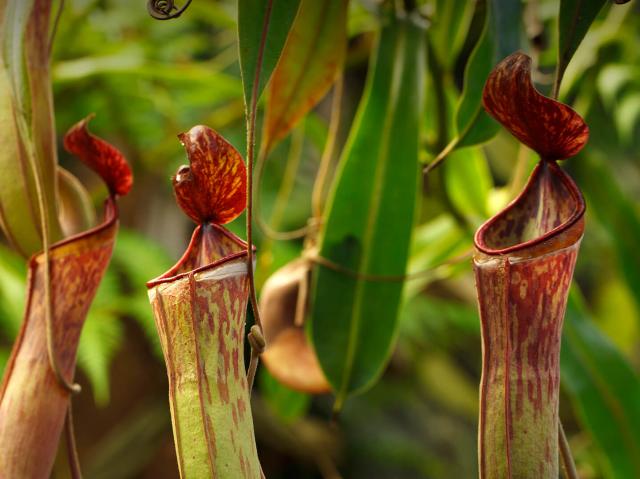
Andean Condor

- Class: Aves (Birds)
- Order: Falconiformes
- Family: Cathartidae
- Genus: Vultur
- Species: gryphus

ABOUT
Andean condors are the largest raptors in the world and the largest flying birds in South America. They soar over the mountains and valleys of the Andes, riding on wind currents to stay aloft. People have long admired their powerful presence, and they’ve come to symbolize power and strength throughout Andean culture. Andean condors are the national bird of Bolivia, Columbia, Chile, and Ecuador, as well as a national symbol of Argentina, Peru, and Venezuela. Many indigenous cultures consider them sacred.
Andean condors are the only New World vultures to show sexual dimorphism. Males are usually larger than females and have a distinctive comb on top of their head, as well as a large neck wattle and brown eyes. Females lack the comb and have red eyes. Males keep the comb all their life, which makes it easy to tell the sex of an Andean condor chick as soon as it hatches. As adults, both sexes have black plumage with white secondary feathers and white neck ruffles. Juveniles have brown plumage and skin and don’t develop their adult coloring until they are about six years old.
Andean condors do not have a syrinx (similar to our larynx), so they cannot vocalize. Instead, they hiss, click, and grunt to communicate.
HABITAT AND DIET
These impressive birds live in the highest peaks of the Andes. They nest in rocky crags and soar over open grasslands and lowland desert regions. When not scanning the landscape for a meal, Andean condors may roost in small groups, often stretching their enormous wings to catch some sun or preen themselves.
Andean condors historically lived in large numbers from the highlands of northern South America to the tip of Tierra del Fuego in the south. They tend to stay away from people though, which has caused their range to decrease dramatically. Today, Andean condors are most often seen in Peru, Chile, and Argentina, and a reintroduction program is taking place in Colombia.
To find food, Andean condors use their excellent eyesight and can spot a meal from high up in the air. They also look for clues to their next meal, such as other raptors gathering in one area on the ground or circling in the sky. Condors can glide over large areas while using little energy. They use warm air currents (called thermals) to help them gain altitude and soar through the sky. By gliding from thermal to thermal, a condor may need to flap its wings only once every hour. When a condor stretches out its wings, its wing feathers look like outstretched fingertips. These “fingertips” let condors make fine adjustments in flight, like wing flaps on an airplane.
Like all vultures, Andean condors are scavengers and eat carrion. They have a high resistance to bacteria, and by consuming carrion, they help decrease the spread of disease throughout the ecosystem. Like most other vultures, condors have a featherless head. This keeps their head from getting too messy while buried in a carcass. They also have a curved beak—an adaptation that helps them tear and rip their food.
After a condor eats, it rubs its head and neck back and forth across the ground to remove any lingering food particles. Then, depending on the size of their meal, they may rest for a while. An Andean condor can consume more than 15 pounds (6.8 kilograms) of meat at one time and may not be able to fly after such a large meal.
At the San Diego Zoo and San Diego Zoo Safari Park, Andean condors eat rats, rabbits, beef heart, trout, and ground meat, depending on the day.
FAMILY LIFE
A male Andean condor makes quite a display to attract his mate. He spreads his wings, clicks his tongue and hisses, and his neck turns pale yellow. If the female is impressed, the two find an appropriate nesting spot, usually in a shallow cave on a cliff ledge. The female lays a single egg, which the parents take turns incubating.
Once the chick hatches, both parents care for it over the course of a year-and-a-half, well after the chick has fledged at six months. The young condor spends this time learning how to be a condor from its parents—everything from how to catch a thermal to what to eat and how to find it. Around six years old it molts the brown feathers of its youth and grows the black-and-white plumage of an adult.
AT THE ZOO
The San Diego Zoo first began caring for Andean condors in 1929. Then, in July 1942, a male chick named Guaya hatched, becoming the first Andean condor to hatch in North America. The world's first incubator-hatched Andean condor followed in May 1950. During one ten-year period, nine chicks successfully hatched. During this time, the Zoo’s wildlife care experts documented what they learned about breeding behavior, chick development, and hand-raising techniques, making the San Diego Zoo a world leader in condor care and sustainable reproduction.
Our knowledge in caring for Andean condors also helped us save critically endangered California condors, a North American cousin.
CONSERVATION
Andean condors play a key role in a healthy, well-balanced environment because of their critical role as nature’s recyclers. Consuming wildlife carcasses helps reduce the spread of diseases such as anthrax and botulism. Yet Andean condors are threatened over most of their range, mostly by people. Coexistence challenges that arise from attacks on livestock lead ranchers to poison livestock carcasses to ward off mountain lions and foxes. However, the poisoned carcasses harm condors, too. The use of lead bullets for hunting ammunition, habitat loss, and reduced food sources also put condors at risk.
The good news is that there are continuing successful efforts to restore Andean condor populations in their native habitats. With help from satellites and radiotelemetry, Colombian biologists have observed reintroduced birds thriving. Not only have they survived and matured, they are now beginning to breed in their native habitat, a significant milestone of success for any reintroduction program.
In the late 1980s, there were fewer than two dozen Andean condors flying free in Colombia. American zoos were asked to participate in a reintroduction program to help increase population sustainability. The San Diego Zoo, along with the Los Angeles Zoo, helped take the lead in this effort. Today, more Andean condors have hatched at the San Diego Zoo and San Diego Zoo Safari Park than any other organization in North America. Thanks to collaboration with several partners, 79 Andean condors—many of which hatched here—have been reintroduced to their native habitats in Colombia and Venezuela since 1989.
Public education and outreach have played a major role in the success of the condor recovery program. Condor “guards” from local communities teach condor natural history and conservation, and local school students learn to “look to the skies” through workshops in techniques such as biotelemetry (radio tracking), field notations, and the use of binoculars and spotting scopes. This provides a deeper understanding of why condors are important to the environment, Andean ecology, and their intrinsic value to our community.
The Andean condor recovery program is a shining example of what we can create when there is cooperation between the public and private sectors, zoos and government agencies, field biologists, and aviculturists. The excitement and enthusiasm for Andean condor recovery is no less now than it was in 1989, when the first male condors flew out of the reintroduction aviary in Chingaza, Colombia.
The future for the Andean condor is much brighter now than it was when we began thanks to our partners and allies like you. Together, we can create a world where all life thrives.
LIFE SPAN
Late 50s to late 60s
Maturity: 6 to 8 years old, though limited food may delay it
YOUNG
Incubation period: 50-60 days
Number of eggs: 1 every other year (but a second one may be laid 4 to 6 weeks later if the first one is lost)
SIZE
Up to 4.25 feet (1.3 meters) long
Weight: Females: up to 24 pounds (11 kilograms); Males: up to 33 pounds (15 kilograms)
Wingspan: Up to 10.5 feet (3.2 meters) across
FUN FACTS
High flyers, Andean condors soar to heights of 18,000 feet (5,500 meters), or almost 3.4 miles (5.5 kilometers) above the Earth.
Andean condors represented nobility and strength for South America’s Inca, Chibcha, and Arawak cultures.
Andean condors flap their wings very little—only about once an hour while soaring. One study observed an Andean condor flying more than 100 miles without flapping its wings at all.



